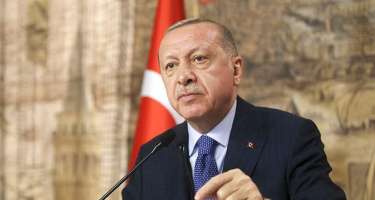Baku, Azerbaijan, Nov. 12
By Aygun Badalova – Trend:
OPEC is unlikely to shift strategy in its meeting which will take place on December 4, the analysts of the US JP Morgan bank believe.
A deal to co-ordinate production levels remains a possibility, but only the inclusion of a non-aligned petroleum exporter will likely act as a sufficiently strong catalyst to forge an agreement, the analysts said in a report obtained by Trend.
In their report analysts also explore the required framework and the scale of necessary production cuts. In particular, they consider some key issues on a potential production agreement: how far output needs to be restricted, who will account for the largest reduction and what are the implications for OPEC; what such a deal might look like in broad terms, either with or without Russia, for producers over the coming quarters; a scenario where Iranian production exceeds their expectations and increases by 1 million barrels per day (mbd) by 4Q2016 – how might OPEC collectively adjust if the Iranians do not participate in production discipline.
Assuming the Middle East Gulf trio (Kuwait, Saudi Arabia, UAE) were to relent in the face of the near universal plea from other OPEC members, then JP Morgan analysts consider the production cuts would remove the 0.67 mbd pro rata across their respective 2016 average output, would entail cuts of 0.4 mbd for Saudi Arabia, and just less than 150,000 barrels per day for both Kuwait and the UAE.
The counter proposal is for all parties to take a share of the cuts, according to the analysts.
Given the limited scope of the cuts – approximate 2 percent of analysts’ current OPEC production forecast (over 32 million barrels per day), it is conceivable that such an agreement is possible, said the report.
US analysts explore an alternative scenario, where Russia participates in a joint production cut action. Analysts also consider a scenario whereby Iran produces well above their expectations of an additional 300,000 barrels per day year over year.
“If Iranian production growth increases by 1 million barrels per day by 4Q2016, then the required cuts would be 1.1 million barrels per day assuming Iran is unlikely to participate. Such a dramatic reduction will be unacceptable by OPEC members in our view, and we are not convinced that any agreement will be reached,” analysts said.
OPEC last met this summer in Vienna, when it agreed to leave its production ceiling unchanged at 30 million barrels per day. The next meeting of the cartel will take place on Dec. 4.
OPEC Secretary-General Abdullah al-Badri has recently said that non-OPEC members should shoulder the burden of balancing the market and cutting supply when prices are high.
Various production cuts scenarios and potential reduction in production from JPM 2016 expected levels (kbd)
|
Opec agrees cuts of 670 kbd |
Non-OPEC cooperation |
Required cuts – 1.06 mbd |
||
|
Only MEG |
All members |
With Russia at 100 kbd |
All OPEC members |
|
|
Algeria |
22 |
19 |
38 |
|
|
Angola |
37 |
31 |
65 |
|
|
Ecuador |
11 |
9 |
19 |
|
|
Iran |
65 |
56 |
0 |
|
|
Iraq |
90 |
77 |
159 |
|
|
Kuwait |
117 |
58 |
50 |
102 |
|
Libya |
9 |
8 |
16 |
|
|
Nigeria |
38 |
33 |
67 |
|
|
Qatar |
14 |
11 |
24 |
|
|
Saudi Arabia |
432 |
216 |
184 |
379 |
|
UAE |
121 |
59 |
50 |
104 |
|
Venezuela |
49 |
42 |
87 |
|
|
Russia |
100 |
|||
|
Total |
670 |
670 |
670 |
1061 |
Follow us on Twitter @TRENDNewsAgency



































